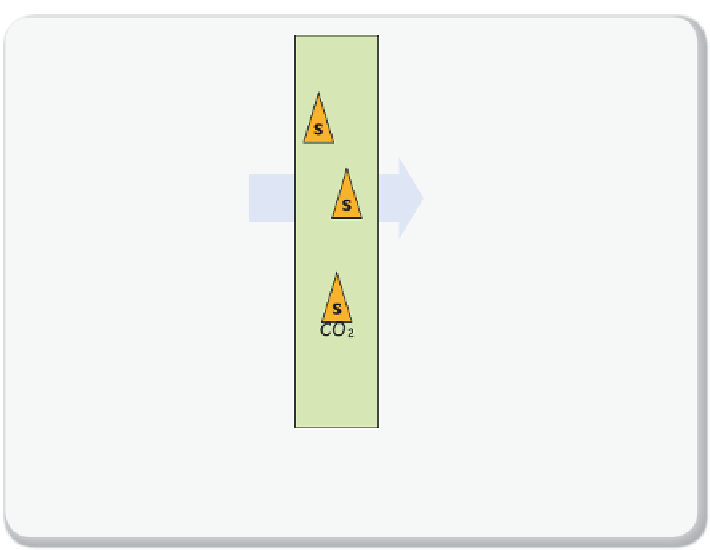Environmental Engineering Reference
In-Depth Information
considering absorption, we realized that one method to improve solubility
was to use a solvent that can react with one of the components. We can
utilize a similar concept to design a membrane system. In this case, a chemi-
cal reaction enhances the permeability of one of the components without
decreasing the selectivity. This mechanism is called facilitated transport.
One of the fi rst articles on facilitated transport was reported by Scholander
in the context of his discoveries for oxygen transport in blood [7.12]. The
work of Scholander focused on the role of hemoglobin to facilitate the trans-
port of oxygen. He showed a marked difference in permeation between a
blood plasma and a plasma plus hemoglobin. In blood plasma without
hemoglobin, oxygen is transported by the conventional diffusion solubility
mechanism. With the addition of hemoglobin, the oxygen has an alternative
route to be transported, which signifi cantly enhances the permeation.
Let us look at the mechanism of facilitated transport in detail.
Figure 7.5.5
illustrates a membrane in which a substrate molecule S
selectively reacts with CO
2
:
∗
[
]
CO
+
S SCO
2
2
Figure 7.5.5
Facilitated transport
Membrane in which we have a substrate S that reacts with CO
2
. This allows CO
2
to be
transported via solubility and with the substrate as a carrier.













Search WWH ::

Custom Search